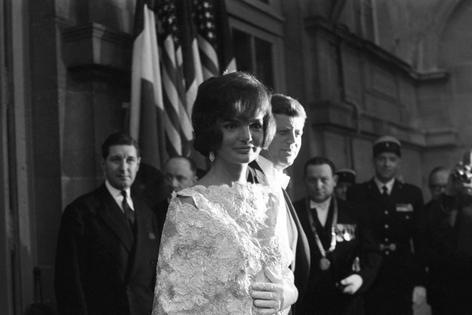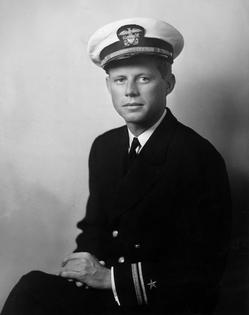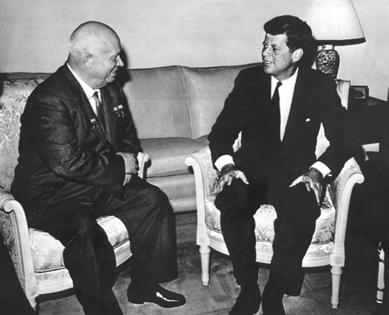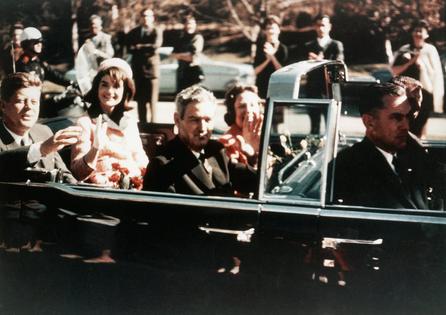The unfinished business of John F. Kennedy’s vision for world peace
Published in Political News
Less than a week after her husband’s assassination in Dallas on Nov. 22, 1963, Jackie Kennedy granted an interview with esteemed political writer Theodore White for Life magazine, one of the leading national publications of its day.
Determined to protect the legacy of the fallen president, Jackie likened the unfulfilled promise of his short-lived administration to the mythical days of King Arthur’s court as portrayed in “Camelot,” a popular Broadway musical at the time and one of Kennedy’s favorites.
“Don’t let it be forgot,” Kennedy told White, “that for one brief, shining moment there was Camelot.”
Though historians have since revealed many of Kennedy’s shortcomings, one fact is undeniable. From his 1960 campaign against Richard Nixon to his little more than 1,000 days as president, Kennedy’s boldness defined the times.
In my view as a scholar of Kennedy’s life, he set the modern-day standard for public service that is all but absent in the 2024 presidential election dominated by the legal woes of Donald Trump and the age of 81-year-old President Joe Biden.
Kennedy’s lofty rhetoric, coupled with his energetic youth, propelled the nation into what he termed the “New Frontier,” the campaign slogan he used to inspire ordinary citizens to make the world a better place at a time of Cold War nuclear tensions between the U.S. and the Soviet Union.
“Let us begin anew … remembering on both sides that civility is not a sign of weakness, and sincerity is always subject to proof,” Kennedy said during his inaugural address in 1961. “Let us never negotiate out of fear. But let us never fear to negotiate.”
Part of the Camelot myth starts with Kennedy’s military service during World War II.
Due to a myriad of illnesses, Kennedy was deemed unfit to join the U.S. Army and was able to serve in the Navy only after his father, the wealthy businessman Joseph Kennedy who was U.S. ambassador to Great Britain during the early war years, intervened on his behalf. Shortly after joining the Navy, Kennedy became commander of a patrol torpedo boat stationed near the Solomon Islands in the southwestern Pacific Ocean.
On Aug. 2, 1943, a Japanese destroyer rammed his boat and sliced it in half, immediately killing two of his men. Kennedy later told an interviewer that when he saw the destroyer pass in front of him he thought, “This is how it feels to be killed.”
The 26-year-old Kennedy led his crew of 11 survivors on a 3-mile swim while towing a badly burned crew member to safety by holding a strap of a life vest between his teeth.
After several days of hiding on an uninhabited island with very little food and water, he was able to get help by etching a message on a coconut that was given to two Solomon Islanders who were patrolling the area in a canoe for Allied forces. They brought the message to a nearby British base, and Kennedy and his men were subsequently rescued.
Once safe, Kennedy sent a note home to his family saying that many people thought they were dead, but “fortunately they misjudged the durability of a Kennedy.”
Kennedy received a Purple Heart medal for being wounded in combat and remains the only U.S. president to receive the honor. JFK also earned the Navy and Marine Corps Medal for his “extremely heroic conduct” after his boat was sunk.
That coconut was later set on a wooden base and used as a paper weight on Kennedy’s desk after his narrow victory over Republican Richard M. Nixon in the 1960 presidential election.
Even though he stumbled in his first year as president, Kennedy learned, made changes and initiated bold measures such as a moral stand on civil rights and a plan for peace with the Soviet Union.
Kennedy’s first major blunder was the Bay of Pigs fiasco. Troubled by Cuban leader Fidel Castro and his relationship with Soviet Premier Nikita Khrushchev, Kennedy approved a U.S. invasion of the Caribbean island by using about 1,400 CIA-trained Cuban exiles who also wanted to overthrow Castro. The attempted coup was launched on April 17, 1961, and was defeated in less than two days by Cuban armed forces.
The botched invasion led Khrushchev to believe that Kennedy was young, naive and weak. That line of thinking played out two months later at the Vienna summit, where the Soviet leader demanded the removal of U.S. troops from West Berlin.
Kennedy refused, but Khrushchev retaliated by starting construction of the Berlin Wall, which became the symbol of the Cold War divisions between Western European democracies and Eastern European countries controlled by communist governments.
Kennedy was a Cold Warrior, but he was also a realist.
In October 1962, Kennedy learned that the Soviet Union had placed missiles in Cuba that could strike the U.S. Kennedy’s advisers urged him to invade Cuba, this time using U.S. military forces.
On the brink of nuclear war, Kennedy ignored his advisers and enacted a naval blockade around Cuba to prevent the Soviet Union from shipping any more military supplies to Castro. It was a bold move that went against Cold War orthodoxy, which would have called for a stronger response to Khrushchev’s actions. Instead, the crisis made it clear that both sides feared nuclear retaliation from the other.
Eight months later, on June 11, 1963, Kennedy gave a speech at American University that proposed peace with the Soviet Union.
“I am talking about genuine peace, the kind of peace that makes life on earth worth living,” he told the crowd. “For, in the final analysis, our most basic common link is that we all inhabit this small planet. We all breathe the same air. We all cherish our children’s future. And we are all mortal.”
In my view, this speech is perhaps his greatest legacy, because it stressed that peace was a process and led to a limited nuclear test ban treaty. Signed in 1963 by the U.S., Great Britain and the Soviet Union, the agreement prohibited tests of nuclear weapons in the atmosphere, outer space and underwater.
It also put Kennedy and Khrushchev on a path to end Cold War tensions between the two superpowers. Those negotiations came to an abrupt halt after Kennedy’s assassination. The Cold War lasted for another 30 years until Nov. 9, 1989, when the Berlin Wall was torn down and communist regimes in Eastern Europe were booted out after free elections.
He served only 1,036 days as president, and much like the myth of Camelot, Kennedy’s legacy remains an unfulfilled dream for peace around the world.
This article is republished from The Conversation, a nonprofit, independent news organization bringing you facts and trustworthy analysis to help you make sense of our complex world. It was written by: Philip A. Goduti, Jr., Quinnipiac University
Read more:
JFK at 100: Why we still cherish his memory
When image trumps ideology: How JFK created the template for the modern presidency
The luck of the Irish might surface on St. Patrick’s Day, but it evades the Kennedy family, America’s best-known Irish dynasty
Philip A. Goduti, Jr. does not work for, consult, own shares in or receive funding from any company or organization that would benefit from this article, and has disclosed no relevant affiliations beyond their academic appointment.




































































Comments